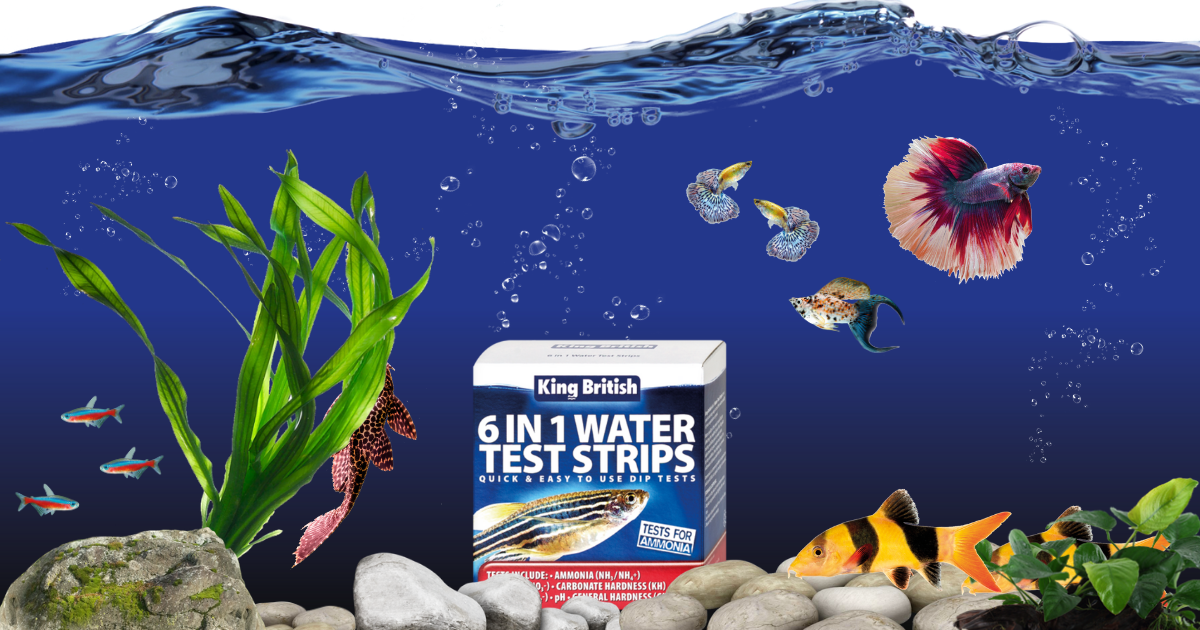- Products
- Help & Advice
- Blog
- 10 things to avoid with your new fishBringing home a new fish is exciting, but there’s also lots to think about. To help you out, we’ve listed 10 things to avoid with your new fish.

- How to maintain good water quality in your fish tankTop tips on maintaining good water quality in your fish tank

- Why is water quality such a big issue when it comes to fishkeeping?Why is water quality such a big issue when it comes to fishkeeping?

- All Blog Entries
- 10 things to avoid with your new fishBringing home a new fish is exciting, but there’s also lots to think about. To help you out, we’ve listed 10 things to avoid with your new fish.
- Store Finder
- Trade Enquiries
- Contact Us
Why is water quality such a big issue when it comes to fishkeeping?

It is fair to say that water quality is one of the most important aspects of fishkeeping. As all fishkeepers know (or should know), poor water quality is almost always the cause of ill health in fish. Simply put, the better the water quality, the more likely you are to have healthy, happy fish.
How does poor water quality make my fish ill?
Poor water quality causes a build-up of toxins
A fish tank is a completely closed environment; any waste produced by your fish, live plants or decomposing uneaten food stays inside the fish tank. This waste releases toxins into the water, such as harmful ammonia and nitrite. Usually, the biological filter will convert these toxins into nitrate, which is less harmful to your fish, but which should still be diluted through regular water changes.
However, if the filter stops working, you miss a water change or you’ve been overfeeding your fish, these toxins can build up, causing serious illness or even death.
Poor water quality weakens your fishes’ ability to fight off infections
Poor water quality causes fish to become very stressed, which weakens their immune system making them more susceptible to infections.
In a fish tank with good quality water and healthy fish, they should be able to fight off low-level infections without assistance, even if they have damaged their skin, slime coat or fins (which can be quite common).
However, if the water quality is poor, a fish with skin or fin damage is at greater risk of infection.
What should I do if I discover my fish tank has poor water quality?
If you discover that your fish tank has poor water quality, then you should:
- Increase the aeration immediately
- Carry out a series of daily 10% water changes (this can be increased in severe cases)
- Check the water quality parameters daily to monitor the changes – use King British 6 in 1 Test Strips to monitor levels
- Clean the gravel using a siphon gravel cleaner
- Check your fish daily for signs of infection or disease
- Limit the amount of food you give your fish to prevent more uneaten food decomposing and adding to your water quality issue
What should I do to maintain good water quality in my fish tank?
The key to maintaining good water quality in your fish tank is regular maintenance and testing.
- Check the filter is working and isn’t clogged up
- Clean the filter sponges (using water from your tank) on a regular basis and change them when necessary
- Conduct regular water changes
- Don’t overfeed your fish
- Test the water regularly.
Check out How to maintain good water quality in your fish tank for a more detailed guide on maintaining good water quality.

